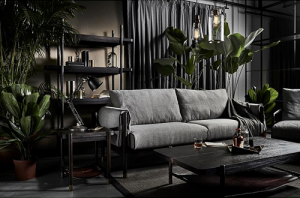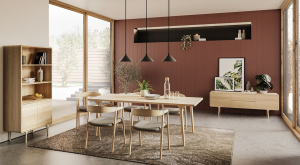A Voice of One’s Own: Next Steps for the Singapore Brand to Shine in the Global Marketplace
In a marketplace of many, distinctive branding is key in capturing the attention of the potential customer and building brand loyalty. A unique selling point and strong values are only the first step to a brand’s success – making it known is the next. As more and more brands stake their claim in the digital space, how might Singapore brands distinguish themselves?
According to Technavio’s market forecast for the furniture market for 2020 – 2024, the outlook for the global furniture industry is projected to have a compound annual growth rate of 4% over the next four years, with 47% of the market’s growth originating from the Asia-Pacific region. China, Japan and India in particular are set to see faster growth than markets in other regions.
With this optimistic forecast for the global furniture industry, the crucial question for the Singaporean furniture industry is whether local brands are poised to capture the increase in market share in the coming years. Whether a brand can succeed in a sea of many will depend on whether it manages to distinguish itself from the pack.
How might the Singapore furniture industry increase its market share by leveraging the Singapore brand? What are some strategies that the Singapore Furniture Industries Council (SFIC) and its members adopt to promote the Singapore brand?
What is the Singapore brand?
Mark Yong, President of SFIC and Executive Director of Ewins, has previously remarked that one defining aspect of the Singapore branding is its innovative solutions for urban living.
For homegrown brands such as OPSH, catering to the needs of the urban dwelling Singaporean has led them to create products tailored for the space constraints that characterise city living. As Kelvin Kwek, Director of OPSH puts it, their trademarked modular pole system wardrobes and kitchen systems are “designed as solutions for urban living. Thus, many cities or countries (that face) space constraints recognise that our brands and products are able to cater to the needs of their markets.”
Apart from this focus on urban living, local brands such as Scanteak also reflect that Singapore brands have long been known to be reliable and trustworthy. In recent years, nimbleness has also come to be a defining attribute of the Singapore brand. For Scanteak, this takes on the form of a business model that is able to scale rapidly. For Ewins, it is about being open to collaborations with innovators to value-add to their products.
Promoting the Singapore brand in the digital space, establishing thought leadership and capacity-building for next-generation leaders
As an industry, this nimbleness manifests in the form of a pivot towards the digital during a time when the online marketplace is experiencing a pandemic-accelerated boom. Whilst traditional trade fairs and marketing trips may be adversely affected by travel disruptions and border closures, the digital realm presents a rich opportunity for expansion. The launch of a consolidated one-stop shop such as Creativ-Space can help Singapore brands reach new audiences and buyers in the region and globally.
Prior to 2020, the organisation of internationally renowned fairs such as the International Furniture Fair Singapore and Singaplural provided key networking opportunities to lay the groundwork for brand partnerships to occur between Singapore brands and its Asia-Pacific and ASEAN partners. Through talks, platforms and awards presented during these fairs, the events also positioned Singapore as thought leaders in the ASEAN market.
In this age of the pandemic, will the next iteration of the fair possess digital aspects, or perhaps even go fully digital? Amidst the turbulence of the times, other industries have not ceased their programming, opting instead to pivot online. The world of commercial art fairs, for instance, continues to trudge on, with Art Basel and Art Jakarta having recently mounted digital editions of their respective fairs.
Whilst the move toward the digital may seem an unlikely choice for an industry where conveying scale, materiality and texture is integral, it does present the opportunity to reach a far wider audience than before. The avenues for establishing thought leadership through online talks and presentations are likewise amplified.
On a more long-term basis, the gradual cultivation of Singapore brands is also supported by the establishment of the Youth Furniture Chapter (YFC), which seeks to nurture local and regional second-generation industry leaders. For Jake Tan, Executive Director of Admira, the ASEAN Youth Furniture exchange stood out to him as one of the most significant YFC events. The exchanges created opportunities to “network and interact with like-minded counterparts in the furniture industry from neighbouring ASEAN countries like Malaysia, Thailand, Vietnam, Philippines and Indonesia.”
Given the projected growth of the regional market, building ties between next-generation regional industry leaders can go a long way towards brokering mutually beneficial partnerships between Singapore brands and brands of the region.
Embracing the digital marketplace and promoting a distinctive local identity
As brands worldwide stake their claim on the digital marketplace, so must local Singapore furniture brands. Homegrown brand Commune approaches its design of its online shopping experience in a similar way to its in-store experience: with the aim of engaging a customer’s five senses to ultimately unlock the sixth sense of emotion.
“We believe that this unique shopping experience has enabled us to win over fans to the brand, as they can identify with Commune as a brand that matches their lifestyle preferences,” Joshua Koh, CEO of Commune says. By designing their products around thematic categories rather than design styles, Commune also creates alternative approaches for customers to relate to their products.
To ipse ipsa ipsum, for whom being a Singapore brand means looking into the country’s melting pot of cultures to draw inspiration, it leverages a distinctive identity to appeal to its audience. Saurabh Mangla, Founder of ipse ipsa ipsum remarks, “From our Straits Collection to our Joo Chiat inlay and Kay Poh side table, many of our pieces have been designed with local spaces in mind. By infusing locally inspired designs with modern technology, our brand experience is a great reflection of Singapore’s modernity and rich history.”
Ultimately, the Singapore brand may mean many things to many people. It is long known for its integrity and efficiency, and has, more recently, been embracing design innovation and collaboration. The Singapore brand that began in humble manufacturing beginnings has a vast potential to grow if it is willing to capitalise on the market realities of today, to deepen its brand identity and extend its reach on a global scale.
Michelle JN Lim is a writer based in Singapore who covers stories on art, design and architecture. She has written for publications such as Plural Art Mag and The Singapore Architect. See more of her work at www.michellejnlim.carrd.co, or find her on Instagram @anothermichellelim.
16 November 2020










